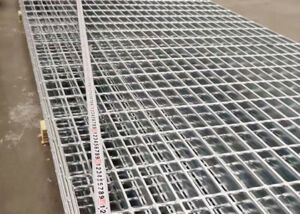When comparing Steel Grating vs. Micro-mesh Grating, understanding their unique characteristics and applications is crucial. Steel grating, made from welded steel bars, offers excellent strength and durability, making it ideal for industrial environments such as walkways and platforms. Its open grid design allows for efficient drainage and airflow, which is essential in preventing liquid buildup. In contrast, micro-mesh grating features smaller openings, providing a finer surface that is often used in areas where small objects might fall through or where slip resistance is a priority. The choice between these two types depends on factors like load capacity, safety, and environmental needs.

Steel grating is favored for its high load-bearing capacity, which makes it suitable for heavy-duty applications. It is commonly used in industrial settings where strength and durability are essential. The open design not only supports substantial weight but also facilitates cleaning and maintenance. Additionally, steel grating can be galvanized or coated for enhanced corrosion resistance, making it a reliable option for outdoor use or in harsh conditions. This type of grating is versatile, serving a wide range of purposes in construction and infrastructure projects.
On the other hand, micro-mesh grating is designed for scenarios where a finer mesh pattern is required. Its smaller openings make it safer for pedestrian walkways and near machinery, where preventing small objects from falling through is critical. The even surface also reduces the risk of slips and falls, providing a secure footing. Micro-mesh grating is often made from materials like stainless steel or aluminum, which offer varying degrees of strength and corrosion resistance. This type of grating is particularly useful in environments where both safety and aesthetics are important.
When choosing between steel grating and micro-mesh grating, load capacity is a key consideration. Steel grating is capable of handling heavy loads and is preferred in settings with significant foot traffic or equipment use. In contrast, micro-mesh grating, while not as robust, provides a smoother and more refined surface, suitable for lighter loads and areas requiring a high level of safety. The material used in each grating type also impacts its performance. For example, steel provides superior strength, while aluminum or fiberglass micro-mesh options offer lightweight and corrosion-resistant properties.
Installation and maintenance are also factors to consider. Steel grating is straightforward to install and maintain, especially when galvanized. However, its larger openings may require more frequent cleaning to prevent debris accumulation. Micro-mesh grating, due to its finer openings, might be slightly more challenging to clean but generally requires less maintenance overall. The decision between these two types should consider long-term maintenance needs, especially in environments where cleanliness is crucial.

In conclusion, the choice between Steel Grating vs. Micro-mesh Grating depends on the specific requirements of your project. Steel grating is ideal for industrial settings that demand high load capacity and durability. Micro-mesh grating is better suited for applications requiring a finer surface and enhanced safety. Understanding the differences between these options will help you select the most appropriate grating type for your needs, ensuring both functionality and safety.

